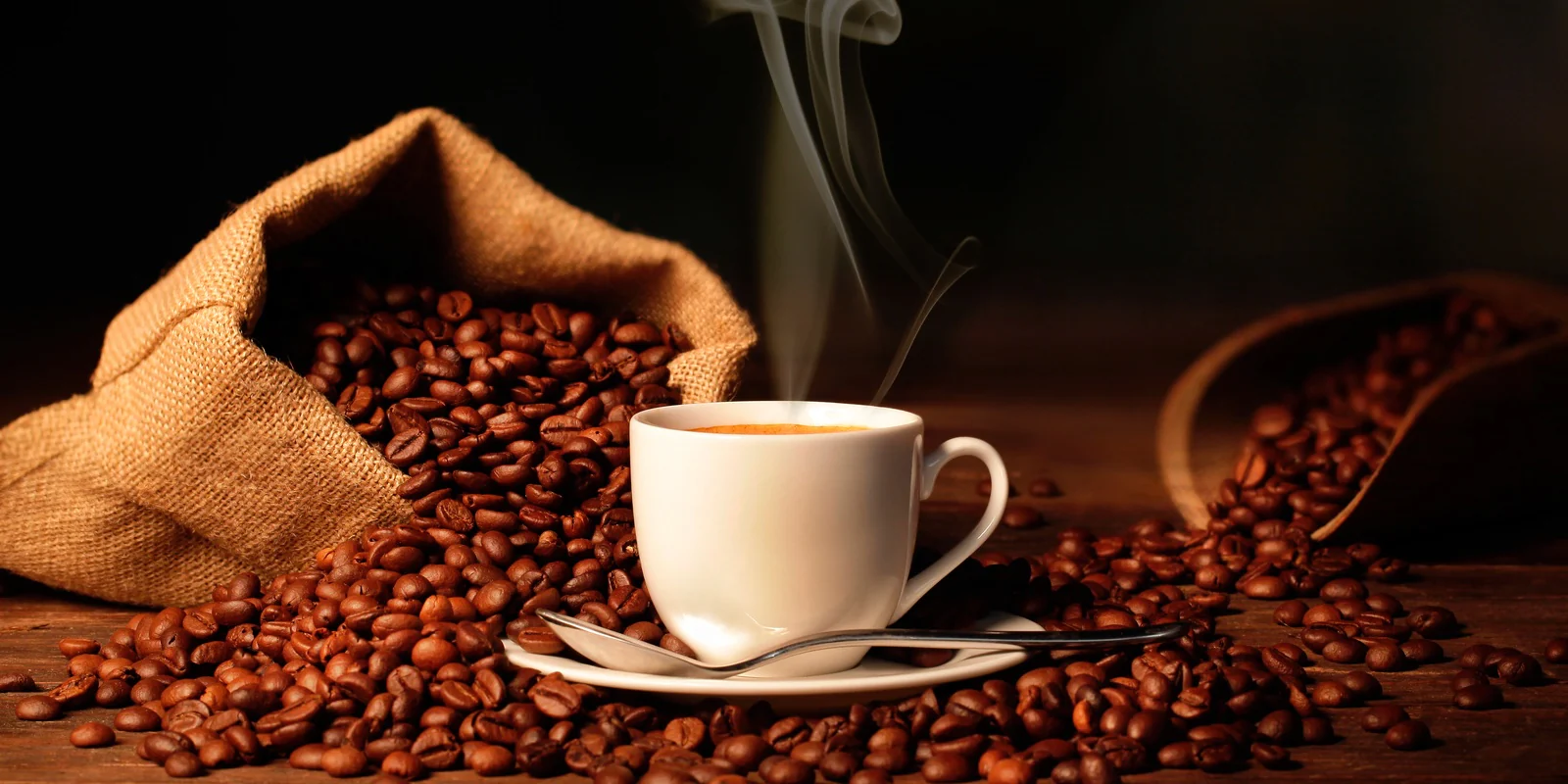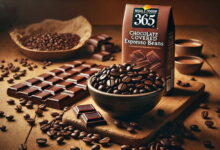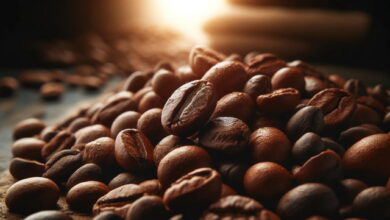Espresso is a popular coffee beverage that is enjoyed by millions of people worldwide. It is made by forcing hot water through finely ground coffee beans, resulting in a concentrated and flavorful shot of coffee. One of the key components of espresso is caffeine, a natural stimulant that is found in varying amounts in different coffee beans. In this article, we will explore how much caffeine is in espresso beans and what factors can affect the caffeine content.
Understanding the caffeine content in espresso beans is important for coffee lovers who want to make informed decisions about their caffeine intake. While caffeine can provide a temporary boost in energy and mental alertness, excessive consumption can lead to negative side effects such as restlessness, anxiety, and insomnia. By knowing how much caffeine is in their espresso, coffee drinkers can better manage their caffeine intake and avoid potential health risks.
Key Takeaways
- Espresso is a concentrated coffee beverage that contains varying amounts of caffeine.
- The caffeine content in espresso beans can be affected by factors such as the type of bean, roasting process, and brewing method.
- Understanding the caffeine content in espresso is important for managing caffeine intake and avoiding potential health risks.
What Is Caffeine?
Caffeine is a natural stimulant that is commonly found in coffee, tea, and chocolate. It is also added to many soft drinks and energy drinks. Caffeine works by stimulating the central nervous system, which can help to increase alertness and reduce fatigue.
Caffeine is classified as a psychoactive drug, meaning that it affects the brain and can alter mood and behavior. It is also considered a mild diuretic, which means that it can increase urine production and contribute to dehydration if consumed in large amounts.
In small amounts, caffeine is generally considered safe for most people. However, excessive consumption can lead to a range of side effects, including anxiety, insomnia, and rapid heart rate. It is important to monitor caffeine intake and consume it in moderation to avoid these negative effects.
Understanding Espresso Beans
Espresso beans are a type of coffee bean that is used to make espresso, a concentrated form of coffee that is brewed by forcing hot water through finely ground coffee beans. Espresso beans are typically roasted darker than other coffee beans, which gives them a more intense flavor and aroma.
Espresso beans can come from a variety of different coffee plants, but they are usually made from a blend of Arabica and Robusta beans. Arabica beans are known for their mild, sweet flavor, while Robusta beans have a stronger, more bitter taste. The combination of these two types of beans creates a balanced and flavorful espresso.
In addition to the type of coffee bean used, the roast level of the espresso beans also plays a significant role in the flavor and strength of the espresso. Espresso beans are typically roasted to a darker level than other coffee beans, which gives them a rich, bold flavor. However, the roast level can also affect the amount of caffeine in the beans.
Overall, understanding the type and roast level of espresso beans can help coffee lovers choose the perfect beans for their preferred taste and caffeine level.
Caffeine Content in Espresso Beans
Espresso is a popular coffee beverage enjoyed by many coffee lovers worldwide. It is made by forcing hot water through finely ground coffee beans at high pressure. Espresso beans are a type of coffee bean used to make espresso, and they have a distinct flavor and aroma.
One of the most important factors that contribute to the popularity of espresso is its caffeine content. Caffeine is a natural stimulant found in coffee, tea, and other beverages. It is known to boost energy levels, improve mental alertness, and enhance physical performance.
Espresso beans are known to have a higher caffeine content than regular coffee beans. On average, a single shot of espresso contains about 63 milligrams of caffeine, while a regular cup of coffee contains about 95 milligrams of caffeine. However, the actual caffeine content in espresso beans can vary depending on several factors, such as the type of bean, the roast level, and the brewing method.
In general, espresso beans that are roasted for a shorter period of time tend to have a higher caffeine content than those that are roasted for a longer period of time. This is because the longer the beans are roasted, the more caffeine is lost due to the breakdown of the chemical compounds that make up caffeine.
In conclusion, espresso beans have a higher caffeine content than regular coffee beans, but the actual caffeine content can vary depending on several factors. If you are looking for a quick caffeine boost, a shot of espresso can be a great option. However, it is important to consume caffeine in moderation and be aware of its potential side effects.
Factors Affecting Caffeine Levels
Caffeine levels in espresso beans can vary depending on a variety of factors. Here are some of the most important factors that can affect caffeine levels:
1. Coffee Bean Type
Different coffee bean types have different caffeine levels. For example, robusta beans have more caffeine than arabica beans. This is because robusta beans are grown at lower altitudes and have a higher caffeine content to protect the plant from pests.
2. Roasting Level
The level of roasting can also affect caffeine levels. The longer the beans are roasted, the lower the caffeine content. This is because caffeine breaks down at high temperatures. So, if you prefer a stronger caffeine kick, you might want to opt for lighter roasts.
3. Brewing Method
The brewing method can also affect caffeine levels. Espresso is made by forcing hot water through finely ground coffee beans at high pressure. This results in a concentrated shot of coffee with a higher caffeine content per volume than other brewing methods.
4. Serving Size
The serving size of espresso can also affect caffeine levels. A single shot of espresso typically contains around 40-50mg of caffeine, while a double shot can contain up to 80-100mg. So, if you’re looking to limit your caffeine intake, you might want to stick to a single shot.
Overall, while there are several factors that can affect caffeine levels in espresso beans, it’s important to remember that the caffeine content can vary depending on the specific beans, roasting level, brewing method, and serving size.
Measuring Caffeine in Espresso
Espresso is a popular coffee drink that is known for its strong taste and high caffeine content. While the exact amount of caffeine in espresso can vary depending on factors such as the type of bean and the brewing method, there are several ways to measure caffeine content in espresso.
By Weight
One way to measure caffeine content in espresso is by weight. This involves using a scale to measure the weight of a sample of ground espresso beans, and then using a chemical analysis method to determine the amount of caffeine present in the sample.
By Volume
Another way to measure caffeine content in espresso is by volume. This involves using a volumetric method to measure the amount of espresso produced by a specific amount of ground beans, and then using a chemical analysis method to determine the amount of caffeine present in the espresso.
By Serving
Finally, caffeine content in espresso can also be measured by serving. This involves using a standard serving size of espresso and using a chemical analysis method to determine the amount of caffeine present in the serving.
It is important to note that while these methods can provide an estimate of caffeine content in espresso, there can be variations in caffeine content depending on factors such as the type of bean, the roast level, and the brewing method. Additionally, caffeine content can vary depending on the individual and their tolerance to caffeine.
Overall, measuring caffeine content in espresso can provide useful information for those who are looking to monitor their caffeine intake or who are interested in the science behind coffee.
Comparison With Other Coffee Types
Espresso is a popular coffee type that is known for its strong and bold flavor. However, how does it compare to other types of coffee in terms of caffeine content? Let’s take a look.
Drip Coffee
Drip coffee is the most common type of coffee consumed in the United States. It is made by pouring hot water over ground coffee beans, which then drips through a filter into a carafe. On average, a cup of drip coffee contains around 95 milligrams of caffeine, which is slightly less than a shot of espresso.
French Press Coffee
French press coffee is made by steeping coarsely ground coffee beans in hot water and then pressing the mixture through a filter. This method produces a coffee that is stronger than drip coffee but not as strong as espresso. A cup of French press coffee typically contains around 80 milligrams of caffeine.
Cold Brew Coffee
Cold brew coffee is made by steeping ground coffee beans in cold water for an extended period of time, usually 12-24 hours. This method produces a coffee that is less acidic and smoother than other types of coffee. However, it also contains less caffeine, with an average of 60-80 milligrams per cup.
Instant Coffee
Instant coffee is made by freeze-drying or spray-drying brewed coffee. It is a convenient and quick way to make coffee, but it is also the least flavorful and contains the least amount of caffeine. On average, a cup of instant coffee contains around 30 milligrams of caffeine.
In conclusion, while espresso contains a higher concentration of caffeine per ounce, other types of coffee can also provide a significant amount of caffeine. The choice of coffee type ultimately depends on personal preference and taste.
Health Implications of Caffeine
Caffeine is a stimulant that affects the central nervous system and can have both positive and negative effects on the body. While moderate caffeine consumption is generally considered safe for most people, excessive intake can lead to health problems.
Positive Effects of Caffeine
Caffeine has been shown to improve cognitive function, increase alertness, and enhance physical performance. It can also provide a temporary boost in mood and reduce the risk of certain diseases, such as Parkinson’s disease and liver cancer.
Negative Effects of Caffeine
Consuming too much caffeine can lead to a range of negative effects, including anxiety, insomnia, and gastrointestinal problems. It can also increase heart rate and blood pressure, which can be dangerous for individuals with cardiovascular disease.
Safe Caffeine Consumption
The amount of caffeine that is considered safe varies depending on the individual. Most healthy adults can consume up to 400 milligrams of caffeine per day without experiencing negative effects. Pregnant women, individuals with anxiety disorders, and those with certain medical conditions may need to limit their caffeine intake or avoid it altogether.
Overall, it is important to consume caffeine in moderation and be aware of its potential effects on the body.
Consumption Guidelines
Daily Limits
When consuming espresso beans, it is important to keep in mind the daily caffeine intake limit. The recommended limit for healthy adults is approximately 400 mg of caffeine per day, which is equivalent to four shots of espresso. However, it is important to note that individual sensitivity to caffeine may vary, and some people may experience negative effects from consuming even lower amounts of caffeine.
Sensitive Populations
Certain populations, such as pregnant women, children, and individuals with certain medical conditions, may be more sensitive to the effects of caffeine. It is recommended that pregnant women limit their caffeine intake to no more than 200 mg per day, as high levels of caffeine intake have been associated with adverse pregnancy outcomes. Children should also limit their caffeine intake, as it can interfere with their sleep and lead to behavioral problems.
Individuals with certain medical conditions, such as anxiety disorders, heart conditions, and high blood pressure, should also limit their caffeine intake. It is recommended that they consult with their healthcare provider to determine a safe level of caffeine consumption.
In summary, it is important to be mindful of the daily caffeine intake limit and to consider individual sensitivity to caffeine when consuming espresso beans. Pregnant women, children, and individuals with certain medical conditions should limit their caffeine intake to ensure their health and well-being.
The Roasting Process and Caffeine
During the roasting process, coffee beans undergo various chemical reactions that affect their taste and caffeine content. The longer the roasting process, the darker the beans become and the more caffeine they lose. This is because caffeine is a relatively unstable compound that breaks down at high temperatures.
However, the amount of caffeine lost during roasting varies depending on the type of bean and the roasting method used. For example, Robusta beans contain more caffeine than Arabica beans, but they also have a more bitter taste. Therefore, Robusta beans are often used in espresso blends to add a stronger flavor and more caffeine.
In addition to the type of bean, the roasting method also plays a role in determining caffeine content. For example, beans that are roasted for a shorter amount of time at a lower temperature tend to retain more caffeine than those that are roasted for a longer time at a higher temperature. However, this also affects the taste and aroma of the coffee, so it is a delicate balance.
Overall, the roasting process has a significant impact on the caffeine content of espresso beans. While it is not possible to determine the exact amount of caffeine in a cup of espresso, understanding the roasting process can help coffee lovers choose the type of bean and roasting method that best suits their taste preferences and caffeine needs.
Decaffeinated Espresso Beans
For those who love the taste of espresso but are sensitive to caffeine, decaffeinated espresso beans are a great option. These beans have been processed to remove most of the caffeine while still retaining the rich flavor and aroma of regular espresso beans.
Decaffeinated espresso beans are made using a variety of methods, including the Swiss Water Process, the Direct Method, and the Indirect Method. Each method has its own advantages and disadvantages, but all are designed to remove caffeine from the coffee beans while preserving the flavor.
One thing to keep in mind when purchasing decaffeinated espresso beans is that they may not be completely caffeine-free. While most of the caffeine is removed during the decaffeination process, there may still be trace amounts left. However, these amounts are typically very small and should not cause any adverse effects for those who are sensitive to caffeine.
Overall, decaffeinated espresso beans are a great option for those who want to enjoy the taste of espresso without the jitters or sleepless nights that can come with consuming caffeine. With a variety of processing methods and brands available, it’s easy to find a decaf espresso bean that suits your taste preferences.
Preparing Espresso and Caffeine Extraction
To prepare espresso, finely ground coffee beans are tightly packed into a portafilter, which is then attached to an espresso machine. The machine forces hot water through the grounds at high pressure, extracting the flavor and caffeine from the beans.
The amount of caffeine extracted from espresso beans depends on several factors, including the type of beans used, the roast level, the grind size, and the brewing method. Generally, darker roasts have slightly less caffeine than lighter roasts, but the difference is minimal.
Espresso shots typically contain between 30-50mg of caffeine per ounce, depending on the factors mentioned above. A single shot of espresso is about 1-1.5 ounces, while a double shot is around 2-2.5 ounces.
It’s worth noting that while espresso shots may contain less caffeine than a cup of coffee, they are often consumed in smaller quantities and with less milk or sugar added, making the caffeine more concentrated. Additionally, many coffee shops offer larger sizes and multiple shots in a single drink, which can significantly increase the caffeine content.
Frequently Asked Questions
What is the caffeine content in a single chocolate covered espresso bean?
The caffeine content in a single chocolate covered espresso bean can vary depending on the type of bean used and the amount of chocolate coating. On average, a single chocolate covered espresso bean contains approximately 6 milligrams of caffeine.
How does the caffeine content compare between espresso beans and regular coffee beans?
Espresso beans generally contain more caffeine per unit weight compared to regular coffee beans. However, since espresso shots are typically smaller than a cup of coffee, the total caffeine content in a single serving of espresso may be lower than a cup of coffee.
Can consuming chocolate covered espresso beans keep you awake?
Consuming chocolate covered espresso beans can provide a quick boost of energy due to the caffeine content. However, the effects of caffeine can vary depending on the individual’s sensitivity and tolerance to caffeine. Consuming large amounts of caffeine can also lead to negative side effects such as jitters, anxiety, and difficulty sleeping.
What is the difference in caffeine intake when eating espresso beans versus drinking coffee?
The caffeine intake when eating espresso beans versus drinking coffee can vary depending on the amount consumed. Generally, a cup of coffee contains more caffeine than a single espresso bean. However, consuming multiple espresso beans can lead to a higher total caffeine intake compared to a single cup of coffee.
How many espresso beans would equate to the caffeine in one cup of coffee?
The number of espresso beans that would equate to the caffeine in one cup of coffee can vary depending on the size of the cup and the strength of the coffee. On average, one cup of coffee contains approximately 95 milligrams of caffeine, while a single espresso bean contains approximately 6 milligrams of caffeine. Therefore, it would take approximately 16 espresso beans to equate to the caffeine content in one cup of coffee.
What is the caffeine level in Trader Joe’s Coffee Lover’s espresso beans?
The caffeine level in Trader Joe’s Coffee Lover’s espresso beans can vary depending on the type of bean used and the roasting process. However, on average, a single Coffee Lover’s espresso bean contains approximately 6 milligrams of caffeine.




